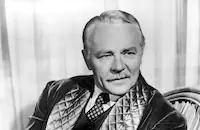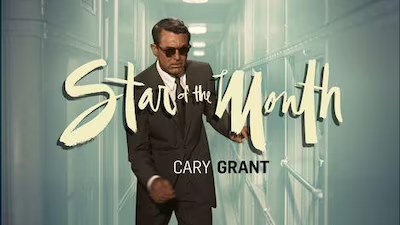This Is the Night

Brief Synopsis
Cast & Crew
Frank Tuttle
Lily Damita
Charles Ruggles
Roland Young
Thelma Todd
Cary Grant
Film Details
Technical Specs

Synopsis
While on the way to the theater in Paris with her lover, Gerald Gray, Claire Mathewson loses her skirt in a limousine door to the delight of the crowd in the street. Arriving home in her slip, Claire is met by her husband Stephen, a javelin thrower supposed to be in Los Angeles for the Olympics, who has just discovered that Claire is planning a rendezvous in Venice. Caught in their lie, Gerald and Claire insist the trip was for two couples and Gerald sets out to find himself a wife. He hires the starving and respectable Germaine, believing that she is Chou-Chou, a sophisticated and glamorous actress. Once in Venice, Germaine and Gerald make love at breakfast and Claire becomes jealous, demanding that the actress leave Venice. Germaine, however, refuses to relinquish her fantasy of a romantic, extravagant Venetian vacation. Meanwhile, Stephen spends the afternoon with "Mrs. Gray" while Gerald and his friend Bunny get drunk, both believing they love the actress. That night, Bunny arrives drunk to take Germaine out in a gondola and Gerald intervenes, ordering Germaine to stay home. Then, as a gondolier sings in the moonlight, Gerald kisses her, but Germaine, tired of the façade, runs to her room, where she cries that she is not spectacular like Chou-Chou, but is respectable and wants only to be herself. Meanwhile, Claire, jealous of the actress' attentions toward Stephen, goes to Gerald's room to make sure Chou-Chou has left town, and Gerald tells his mistress she has fallen back in love with her husband. Bunny then falls off Germaine's balcony into the canal and Stephen, thinking that he is a prowler, rushes in to save Germaine. Claire and Gerald, finding Stephen in Germaine's room, fly into a rage, believing the actress is living up to Chou-Chou's bad reputation. Gerald then admits Germaine is not his wife, and Stephen admits he knew all along. When the police arrive with the soaked Bunny, Stephen is cleared of Claire's suspicion and they are reconciled. While Germaine leaves the hotel in a gondola, Bunny tells Gerald that Germaine replaced Chou-Chou, and Gerald runs after Germaine. As the gondolier sings, Gerald proposes to Germaine in the moonlight.

Director
Frank Tuttle
Cast

Lily Damita

Charles Ruggles

Roland Young

Thelma Todd

Cary Grant

Irving Bacon

Claire Dodd
Davison Clark
Crew
Fred Archer
Lucien Ballard
Sam Coslow
Benjamin Glazer
Benjamin Glazer
J. A. Goodrich
George Marion
George Marion
William Mellor
Victor Milner
Ralph Rainger
William Rand
Guy Roe

Photo Collections
Film Details
Technical Specs

Articles
This is the Night
Young stars as an aging playboy hoping to romance Thelma Todd in Paris while her husband (Grant) is throwing javelins in the Los Angeles Olympics. When Grant returns home suddenly, Young's best friend, Ruggles, hooks him up with Damita, who poses as his wife so the two couples can vacation in Venice. The object of the ruse, Young's affair with Todd, is quickly forgotten when all three men fall for Damita instead.
The story started out as the 1923 French play Pouche, by Rene Peter and Henri Falk. Avery Hopwood adapted it as Naughty Cinderella for Broadway, where it starred Irene Bordoni. Paramount bought the film rights and brought it to the screen in 1926 as Good and Naughty, a vehicle for silent-screen sensation Pola Negri.
Like many Paramount films made in the early '30s, This Is the Night reflects a distinctly European sensibility. Director Ernst Lubitsch's sophisticated comedies and innovative musicals (the latter influenced by the films of French director Rene Clair) were among the studio's most acclaimed hits, so naturally similar movies sought to capture their unique style. This Is the Night opens with an orchestra (contemporary sources credit Duke Ellington and His Band) warming up under the titles. When Todd loses her skirt in an altercation with a taxi door at the film's start, it turns into a song echoed through the streets of Paris as the story spreads. Later, the "double date" in Venice leads to a variety of risqué scenes as the three men court Damita, suggesting to the audience that more is going on than mere flirtation and is occurring off screen.
This did not escape the censors' notice. The Production Code Administration objected to the scene in which Todd loses her skirt, with their chief, Jason Joy, complaining about "a vista of legs and thighs about the knees." He also warned that Young's reaction to the accident suggested that even more had been exposed. That got through, though pressure from the Italian government led Paramount to cut a few comedy bits featuring an ethnic stereotype of Italian policemen. When stricter Production Code enforcement arrived in 1935, Paramount won permission to re-issue the film after excising a scene in which Damita undressed behind a screen.
The multi-lingual Damita had come to the U.S. in the early days of talking films. Although under contract to Sam Goldwyn, he had little for her to do, lending her to other studios through most of her career. She seemed an ideal match for Paramount, whose European-style productions also starred Marlene Dietrich and Maurice Chevalier. But despite her talents and beauty, Damita never achieved wide popularity among the movie-going public. When the press reviewed This Is the Night, Variety lamented that neither she nor leading man Young provided the film with much in the way of marquee value. That was no problem for a character actor like Young, who would enjoy a long career in scene-stealing supporting roles. But Damita would eventually become more famous for her tempestuous marriage to swashbuckling star Errol Flynn and retire from the screen in 1937.
After appearing uncredited in the 1932 short Singapore Sue, Grant had signed a contract with Paramount, which put him into seven films that year, starting with his role as the jealous husband in This Is the Night. Even in a secondary role, he stood out, with Variety's reviewer hailing him as "a potential femme rave." Nonetheless, he was less than pleased with the film and worried that if audiences accepted his losing his wife to the older, less attractive Young it would keep him from finding leading man roles. After the preview, he got drunk and his friends had to convince him not to give up on Hollywood altogether. It would take a year and seven more films for him to emerge as a star when Mae West picked him to star opposite her in She Done Him Wrong (1933).
Producer: Benjamin Glazer
Director: Frank Tuttle
Screenplay: George Marion, Jr.
Based on the play Naughty Cinderella by Avery Hopwood, adapted from the play Pouche by Rene Peter, Henri Falk
Cinematography: Victor Milner
Score: Ralph Rainger
Principal Cast: Lili Damita (Germaine), Charlie Ruggles (Bunny West), Roland Young (Gerald Grey), Thelma Todd (Claire), Cary Grant (Stephen), Irving Bacon (Jacques), Claire Dodd (Chou-Chou), Duke Ellington and His Band.
BW-78m.
by Frank Miller

This is the Night
Quotes
Trivia
Notes
The copyright catalog lists Pouche as an alternate title for this film. The working titles for the film were He Met a French Girl and Temporary Fiancée. A contemporary source credits Duke Ellington and His Band and George Dewey Washington as performers in Folies de Paris, which frames the film's story. Credits to this film roll as the orchestra warms up and plays the overture to Folies de Paris, and the film ends with the maestro finishing and then closing the score. According files in the MPAA/PCA Collection at the AMPAS Library, the Hays Office objected to the opening scene in which Claire loses her dress. Quoting the script [in italics] in a letter to B. P. Schulberg, Chief Studio Executive at Paramount, on January 7, 1932, Colonel Jason S. Joy, the Director of the Studio Relations Office of the AMPP, stated: "Not only does Claire lose the dress, but she reveals a vista of legs and thighs about the kness." Joy continues: "When Claire's coat flies open and Gerald looks down on a "vista" afforded by the open coat, he gasps-with a great intake of breath. The supposition is that he has seen a great deal." On September 16, 1935, Paramount requested a Code seal for a re-issue of this film from the PCA; the seal was given after Paramount deleted a scene in which Germaine undresses behind a screen and throws her clothes over the top of it. Following a complaint from the Italian ambassador, Paramount reportedly cut two or three shots of comical characterizations of the Italian police. According to a news item in the New York Times, French aviator Joe Lefert worked in a scene with Lily Damita. Leffert reportedly was chief aviation instructor for General Chang Tao-lin in Manchuria in 1921. In a script dated January 13, 1932, Benjamin Glazer is listed as associate producer. This was the first film in which Cary Grant had a starring role. Film Daily called Grant a "former stage favorite," and the Variety review stated that Grant looked "like a potential femme rave." New York Times called Grant's character "Stepan Mendanich." Although Gerald's valet is both referred to in the film and credited as "Sparks," numerous reviews call him "Jacques," the name of Gerald's valet in the play. In 1926, Famous Players-Lasky made a film based on the play Naughty Cinderella called Good and Naughty, directed by Malcolm St. Clair and starring Pola Negri and Tom Moore (see AFI Catalog of Feature Films, 1921-30; F2.2182).

Miscellaneous Notes
Released in United States 1932
Released in United States 1994
Released in United States 1932
Released in United States 1994 (Shown at AFI/ Los Angeles International Film Festival (All Night Movie Marathon: "Comedies of Elegance") June 23 - July 7, 1994.)














